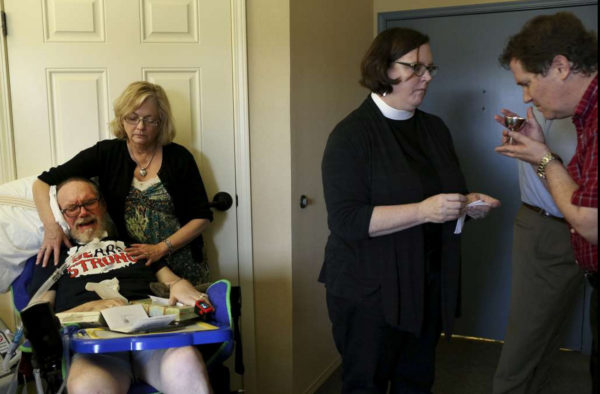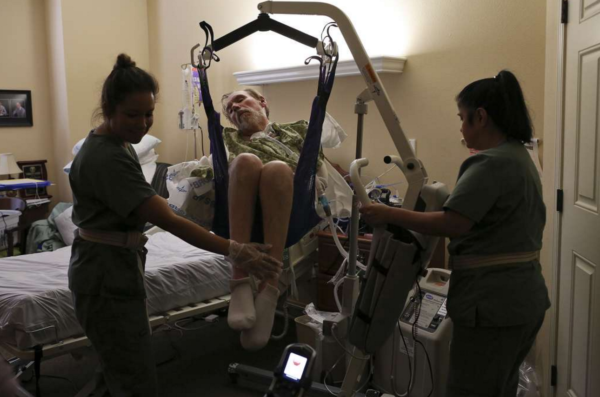Notes
Making Faith Visible: Picturing the Spiritual through the Ultimate Anguish

Stories about terminal illnesses are about more than death: they’re about family, medicine, finances, conflict, hope — and often, faith. Death is almost universally regarded as a topic of spiritual import, even for people who aren’t particularly religious. For a photographer telling an in-depth story where death is a primary character, faith plays a supporting role that can’t go ignored.
Yet with much of a person’s spiritual life being internal and invisible, it can be hard for a photographer to convey the importance of one’s faith in visual terms. In her intimate telling of the story of Dr. Walter Root, a witty psychiatrist whose life was ended by a painful struggle with ALS, San Antonio Express-News photographer Lisa Krantz found a way to convey the importance of the Root family’s religious faith that is both nuanced and complete. Remarkably, she did so without a single detail of a crucifix, a rosary, or any of the other go-to symbols that can serve as religion stand-ins when the actual impact of religion on a subject’s life isn’t adequately explored.

Religion was in fact deeply important for Dr. Root and his wife Debra, who is a principal at an Episcopal school. For Krantz, illustrating this meant being present during their prayers, listening to them talk about their faith and learning what it is about that faith that informed their experience. It meant learning that for the Roots, religion wasn’t simply a tool that helped them get through hardships, but a source of life and purpose in all seasons. There is a powerful moment that illustrates this, captured by Krantz near the end of Dr. Root’s life: With his wife beside him, Dr. Root weeps after realizing he won’t be able to take communion because of interference from a feeding tube.

Krantz’s work is successful not because it explicitly references religion, but because it explores one of the universal themes that religions are made to address: human suffering. Intentionally or not, Krantz illustrates this theme in much the same way artists from Christian history have done so for centuries. Her deathbed images of Dr. Root are especially reminiscent of Matthias Grünewald’s Isenheim Altarpiece, a devotional work that was initially created for display in hospitals. Its particularly visceral (and, at the time, controversial) depiction of Christ was meant to connect the afflicted with a God who also was also acquainted with suffering.

Krantz accomplishes much the same goal. She goes beyond simply tacking Christ onto her series as a form of forced exposition, but instead makes her subject a kind of Christ. She allows us to encounter, in more ways than one, a man who has been united with his God.
— KC McGinnis
Photographs by Lisa Krantz from Trapped in a Dying Body, San Antonio Express-News.
Caption: Walt cries during communion on the Sunday when Associate Rector the Rev. Beth Wyndham brought services to the nursing home. Walt became emotional when Wyndham took the wafer on his behalf since he could no longer swallow. Caption 2: As the final moments of his life ticked away, Walt is caressed and comforted. He wasn’t able to die at home, but he was surrounded by his family, which in essence made it “home” for him, Megan said. Walt’s heart -– for decades filled with unbounded love for his wife and kids, patients and friends -– stopped at 3:33 a.m. May 31, 2016. Caption 3: The Isenheim Altarpiece is on display at the Unterlinden Museum at Colmar, Alsace, France. Caption 4: Walt is transferred from his bed to his wheelchair by two Coronado staff members using a Hoyer lift, so he could spend a few moments outside in May. It would be the last time he left his room.


Reactions
Comments Powered by Disqus